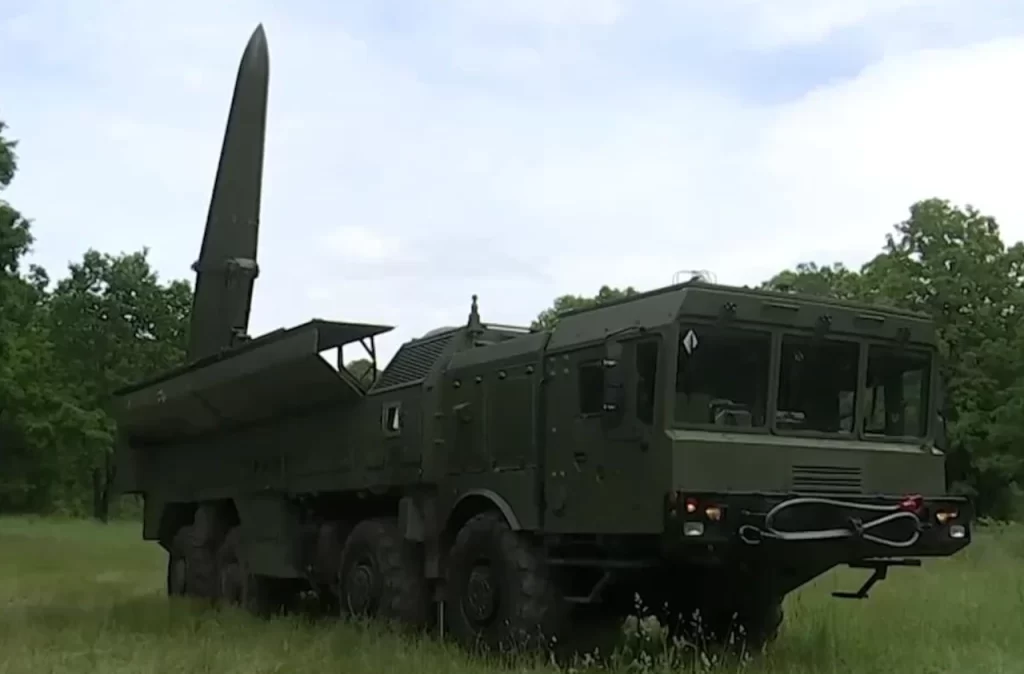Ukraine has received a variety of air defense systems from its major partners, including the Patriot, IRIS-T SLM, SAMP/T [or Mamba], NASAMS, Hawk, Crotale NG, and Aspide, since Russia’s invasion of its territory on February 24, 2022. The Ukrainian forces have acquired these systems in addition to those they inherited from their Soviet past. This heterogeneity does not necessarily imply efficiency, as it can be difficult to integrate these systems into an adapted command and control chain (C2). Nevertheless, Ukrainian President Volodymyr Zelensky maintains that his primary objective is to enhance air defense.
General Oleksandr Syrsky, the commander-in-chief of the Ukrainian Armed Forces, provided the figures during a Congress of Local and Regional Authorities this week, which clearly demonstrate the cause for this.
Russia has launched 9,627 missiles and deployed 13,997 “kamikaze” drones (or teleoperated munitions) at Ukrainian targets since the outbreak of the conflict. 11,879 of the 23,624 of them successfully reached their specified targets, which equates to 50% of them. In particular, 6,203 civilian positions and 5,676 military sites were affected.
Of the 23,624 missiles and drones that Russia launched, 11,701 were intercepted by Ukrainian air defense. At the same time, 44 others were unable to reach their intended destinations for a variety of reasons, such as technical malfunctions.
The effectiveness of the military aid provided by Western countries cannot be definitively determined, as Ukrainian forces were compelled to rely on Soviet-designed systems during the initial months of the conflict.

However, the statistics presented by General Syrsky provide a glimpse into the performance of the missiles and drones used by Russian forces, including the Shahed-136 supplied by Iran. It is also crucial to consider that Ukrainian air defense may not have the requisite ammunition to use its systems completely, which could affect its ability to operate freely.
Nevertheless, it has intercepted approximately 66% of Kalibr, Kh-555/101, and R-500 cruise missiles, which is a variant of Kalibr for the Iskander K system.
The Kh-555/101 (NATO code: AS-15 “Kent”) is the least effective of all, with 1,441 interceptions out of 1,846 launches (a 78% loss rate). This is particularly noteworthy.
Nevertheless, the success rate of Ukrainian air defense is reduced to 22% for guided missiles, including the Kh-59, Kh-35, and Kh-31.
The reason for this discrepancy, as per the specialized Ukrainian website Defense Express, which reported these figures, is that “guided missiles are typically launched at targets situated on the front line or border, where it is impossible to deploy a significant number of air defense systems.”
The interception rate of ballistic missiles, such as the Iskander-M, Tochka U, and KN-23 of North Korean design, is a mere 4.47%, which is posing a significant challenge for Ukrainian forces. The same is true for the S-300/S-400 air defense missiles that are employed for ground strikes: only 0.63% of the 3,008 missiles that were fired were intercepted. According to Ukrainian sources, Russia maintains an extensive inventory of missiles for the S-300, which are capable of striking with a high degree of precision at a range of 50-70 kilometers.
However, the Kh-22 “Bouria” anti-ship missile (NATO code: AS-4 “Kitchen”) is the most formidable weapon in the Russian arsenal. Out of the 362 missiles launched by Tu-22 and Tu-95 bombers, only 2 were intercepted, resulting in a success rate of 0.55%.
Lastly, Russian hypersonic missiles are not infallible, despite their being referred to as “invincible” 28 of the 111 “Kinjal” missiles fired by MiG-31K heavy fighters were intercepted, which is approximately 25%, according to General Syrsky’s figures. The Zircon missile, which is employed by the Russian Navy, is not significantly more effective than the other missiles: out of the six that were launched, two were intercepted (a third), while the remaining four struck civilian targets. The effectiveness of the P-800 Oniks anti-ship missile is significantly higher: only 12 of the 211 missiles that were fired failed to strike their intended target, resulting in a failure rate of 5.7%.
Their overwhelming quantity is a concern in relation to the Lancet and Geran-2 teleoperated munitions, which are the Russian equivalent of Iran’s Shahed-136. A specific number of individual drones will inevitably achieve their designated objectives when used in bulk. In fact, Ukrainian air defense destroyed 9,272 of the 13,997 missiles launched by Russian forces, resulting in a success rate of 66%.
Contradiction to Previous Claims
The figures provided above are in direct opposition to the Ukrainians’ previous assertions.
Mykola Oleshchuk, the commander of the Ukrainian Air Force, stated in January 2024 that the Defense Forces are intercepting 85% of the cruise missiles and attack drones that Russia employs to attack Ukraine.
